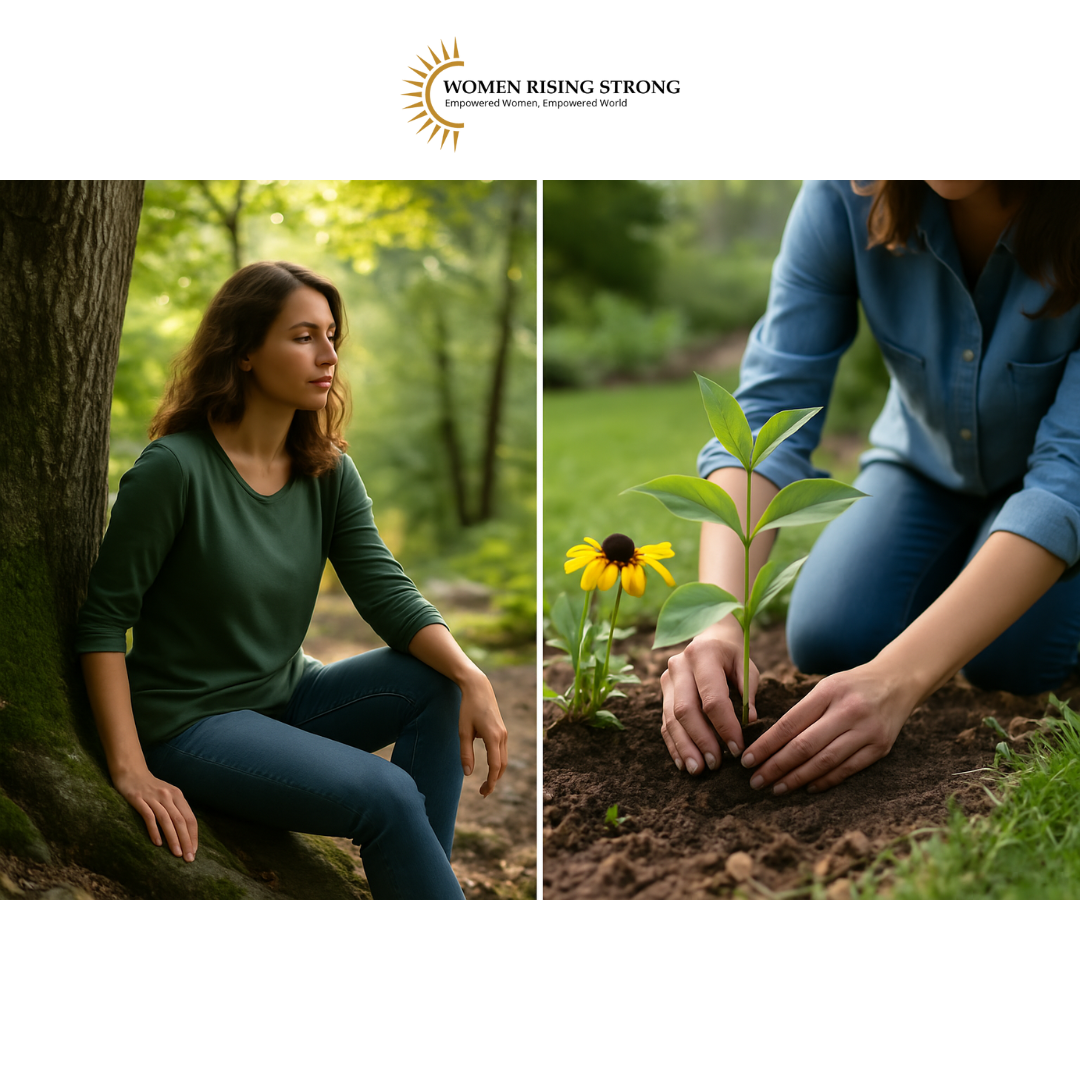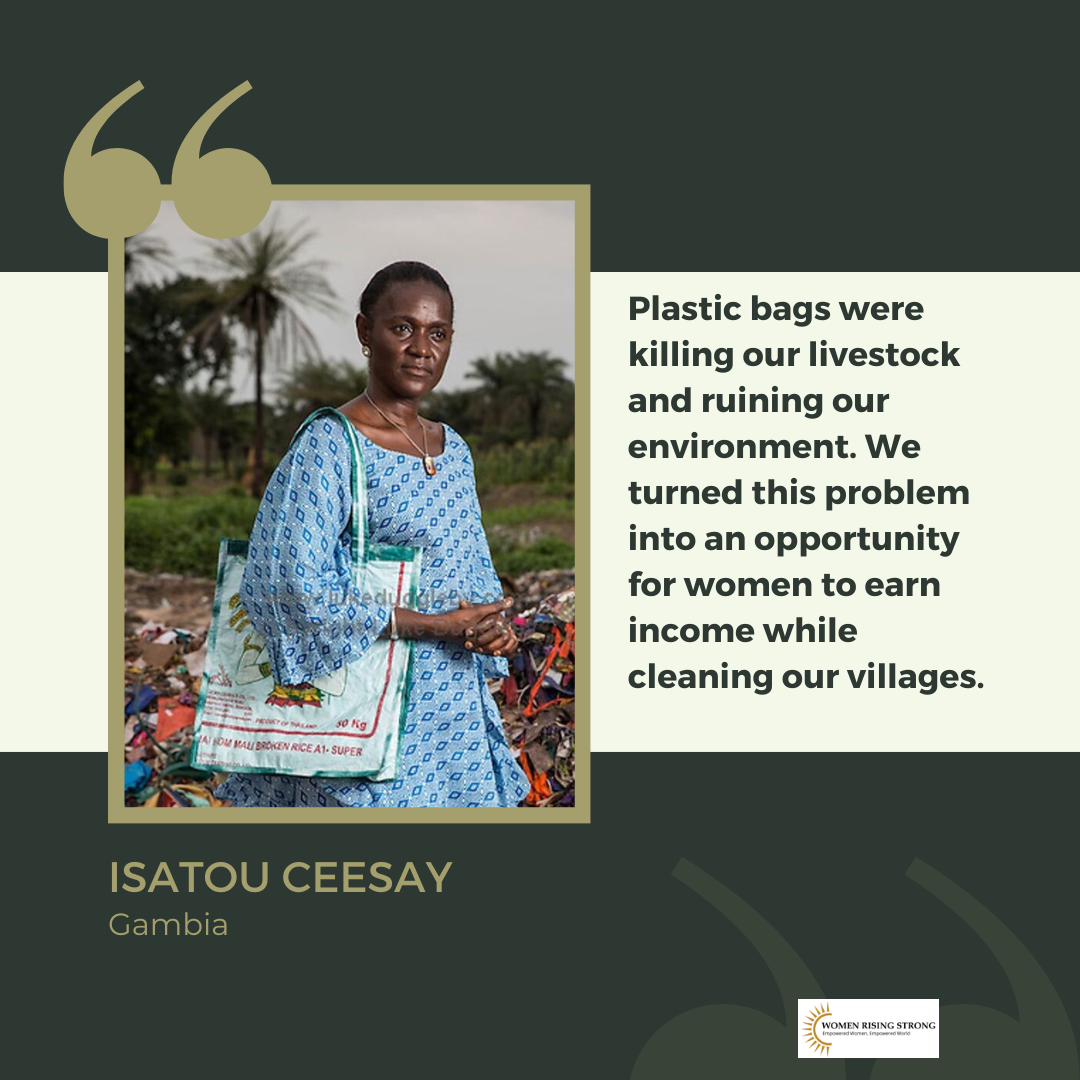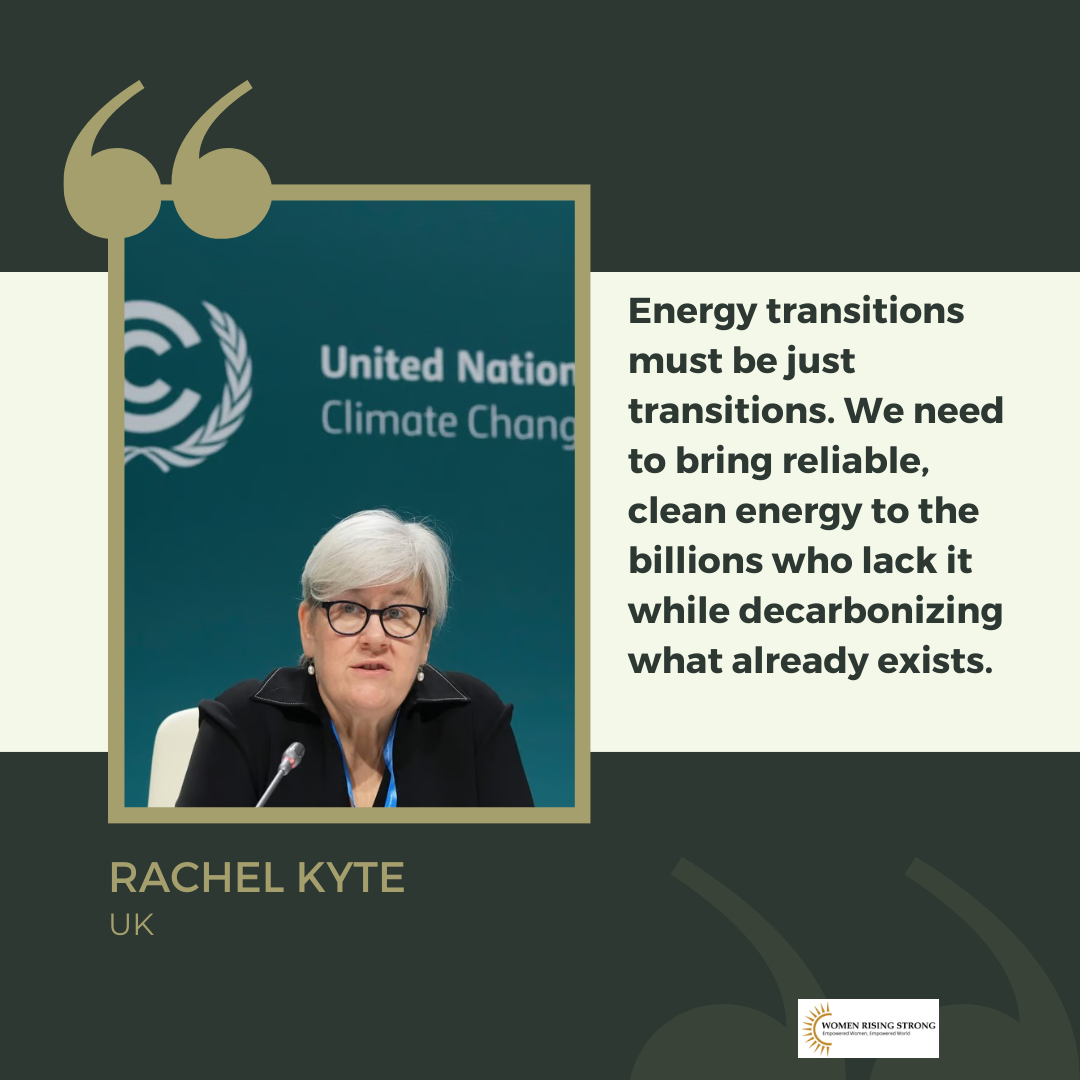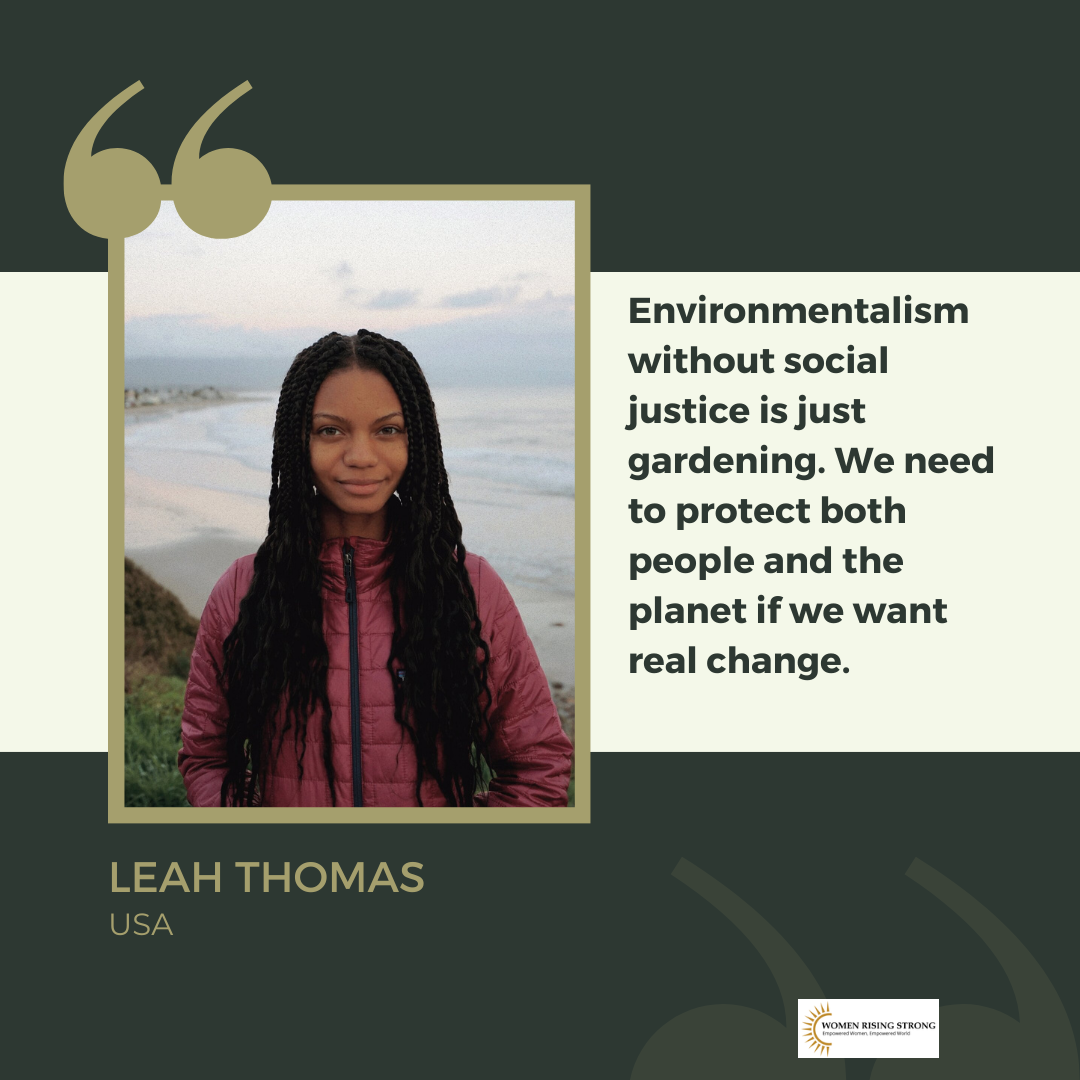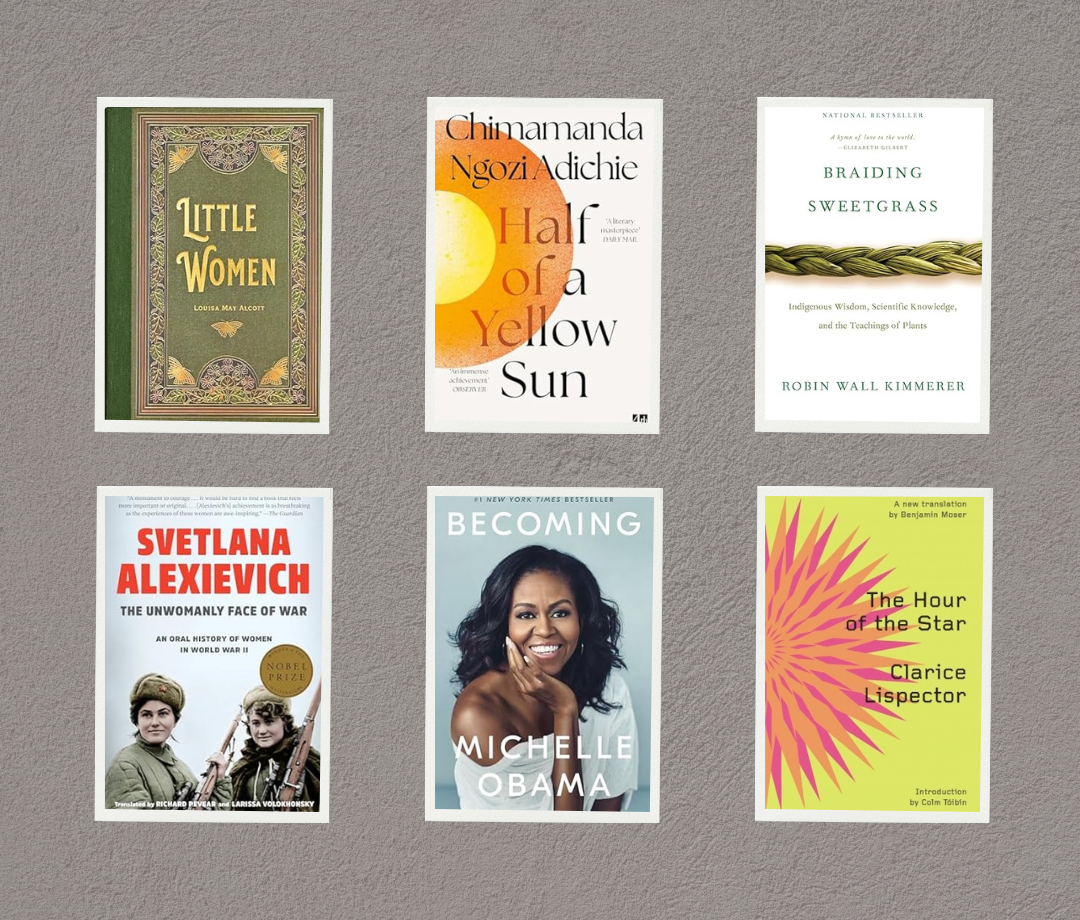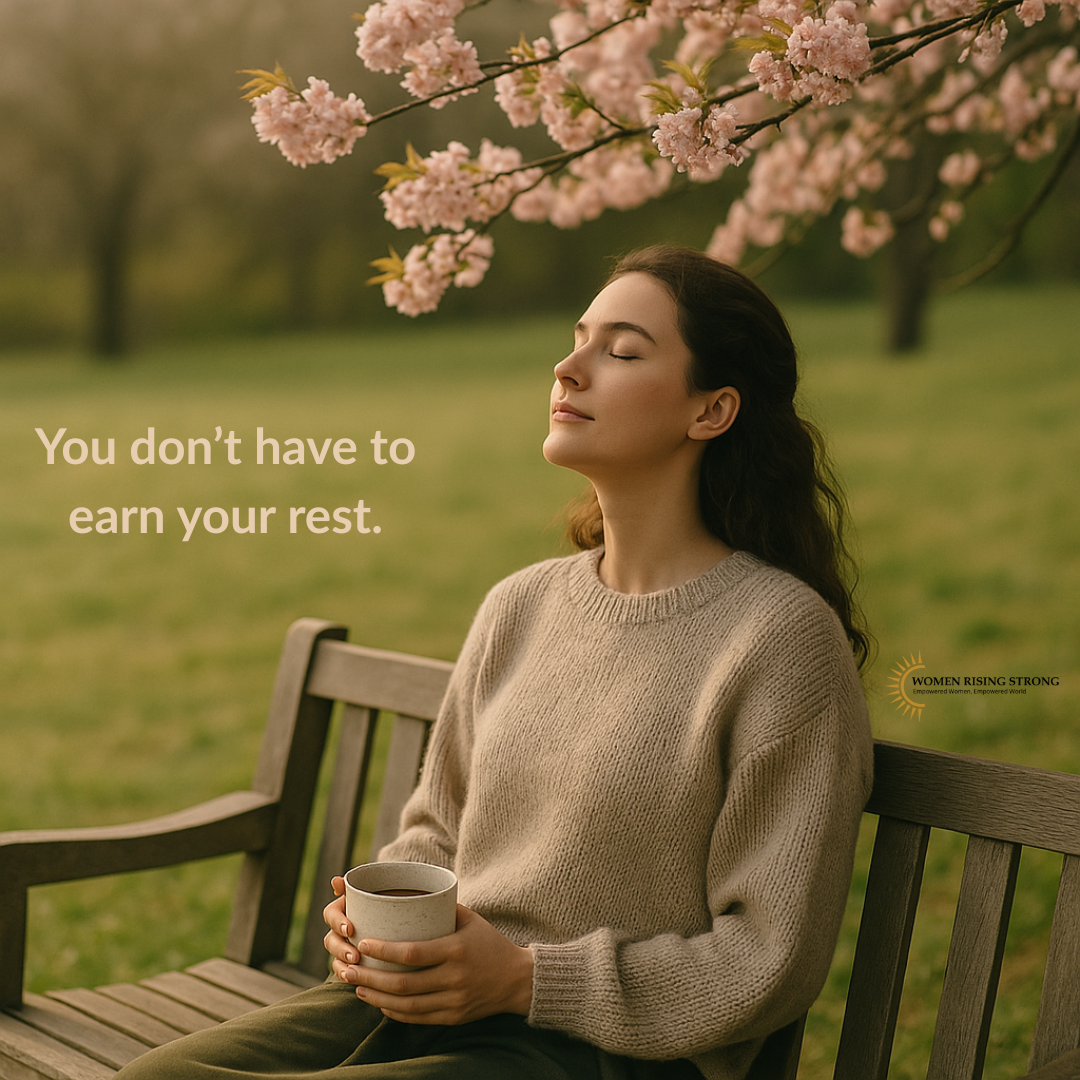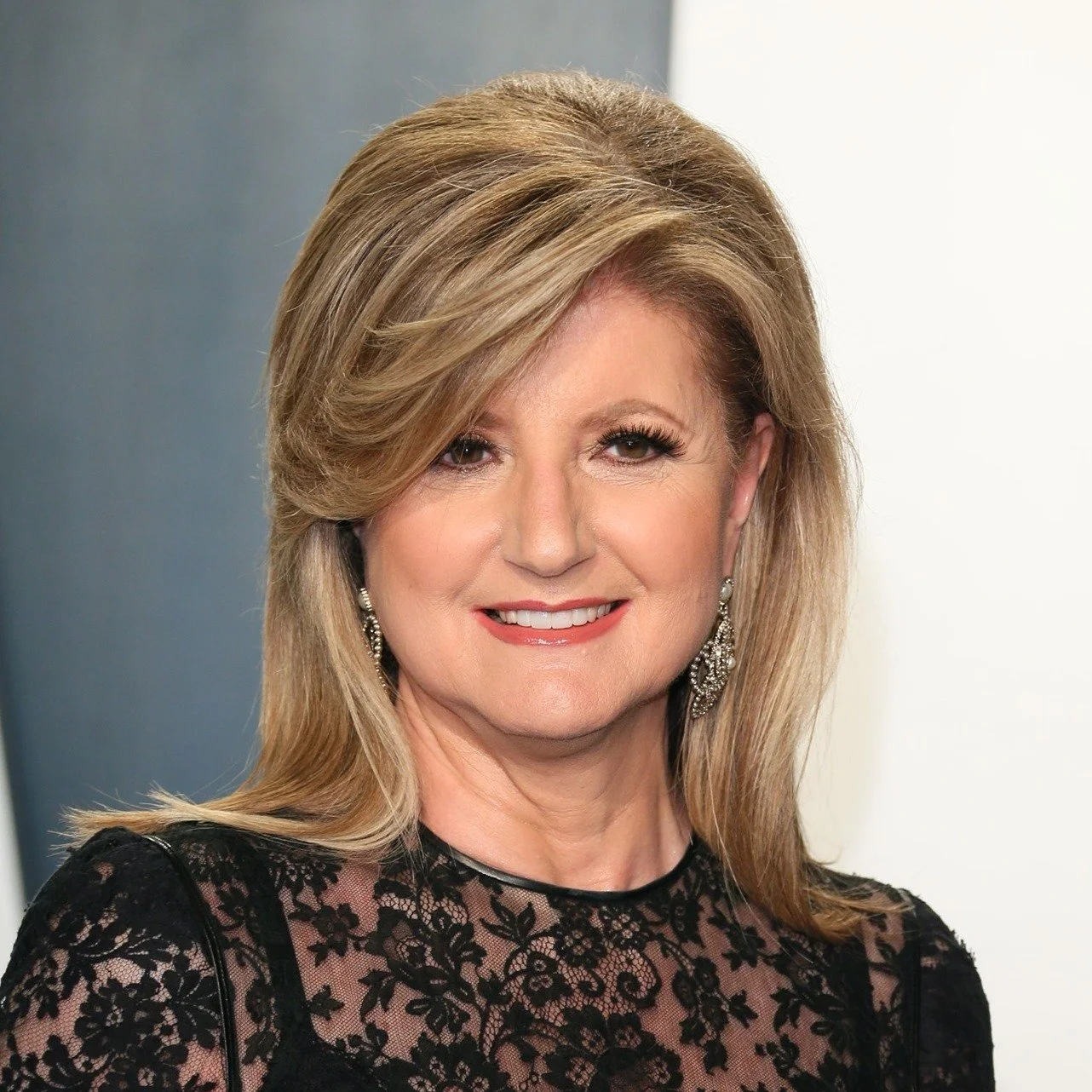WOMEN OF THE EARTH
Nurturing Our Planet, Nurturing Ourselves
The April rains have finally begun to ease here in Budoia, and I find myself drawn back to the magnificent trails at the foot of the Alps that I’m lucky enough to call home. I’m holding onto the hope that the sun will peek through soon so I can resume my daily walks. When the trails open up again—mud and all—they always bring me back to myself.
There’s something grounding about being out in nature. It reminds me to slow down, breathe deeper, and listen in. It’s no coincidence that Earth Day falls in April. For centuries, women and nature have been closely linked—not just in metaphor, but in the way we care, nurture, and hold space for what’s fragile and essential.
THE FEMININE AND THE EARTH
April mirrors cycles many women know well: the ebb and flow of energy, the need for rest before renewal, and the quiet power of patience.
We often hear the phrase Mother Earth, and while it's a beautiful image, women’s roles in sustainability go far beyond symbolism.
Caring for the planet isn’t about big gestures. It’s in the choices we make every day—how we eat, shop, move, and rest. It’s about balance. About noticing when we’re giving too much and forgetting to refill our own well.
That’s why caring for the Earth can also be a quiet act of self-respect. What if we approached sustainability not as a burden, but as a daily rhythm that nourishes both the soil and the soul?
Research shows that women across the world are often on the front lines of environmental challenges—from walking longer distances to collect water during droughts to facing greater risks during climate-related disasters.
But what’s just as true is this: women have emerged as powerful catalysts for change.
Households led by women tend to have 20% smaller carbon footprints than male-led households with similar income levels
Countries with more women in parliament are more likely to ratify and enforce environmental treaties
Community conservation projects with women in leadership show higher success rates and more equitable sharing of resources
These aren’t just numbers. They point to something deeper: when women lead, they often bring holistic perspectives—ones that consider not only what needs to happen now, but what will matter ten, twenty, even fifty years from now.
👑 WOMEN WHO ARE MAKING A DIFFERENCE
Here are four women I admire—not because they’re famous, but because they’re doing the work. Thoughtfully. Consistently. Powerfully.
Isatou Ceesay - Gambia
They call her the “Queen of Recycling,” but her work is about more than plastic. In the 1990s, Isatou saw waste piling up in her village and livestock dying from plastic bags. Instead of walking away, she started collecting the bags and turning them into something useful—mats, bags, income, dignity. Through the Women’s Initiative Gambia, she taught others to do the same. Today, hundreds of women have sustainable work, and her project has changed waste management across dozens of communities
If you want to see her work in action—and meet the women behind the movement—this short video captures the heart of what Isatou has built, and why it matters:
👉 Watch here
2. Mari Luz Canaquiri Murayari - Peru
Mari Luz is a Kukama leader from the Peruvian Amazon who defends both her land and her people. As president of a federation of 18 Indigenous communities, she’s fought against illegal logging and worked to protect the Marañón River—successfully winning legal protections that recognize rivers as living beings with rights. For her, defending the forest means defending life itself.
If you’d like to see her story told in her own words—and understand just how powerful this legal victory is—this short video brings her fight, her courage, and her community’s love for the river to life:
👉 Watch here
3. Rachel Kyte - UK
Rachel has spent decades working at the highest levels of climate diplomacy, but what stands out is her clarity and consistency. Whether at the UN or now as Dean of The Fletcher School, she’s focused on expanding access to clean energy and making sure no one is left behind in the transition. Her leadership helped bring electricity to millions and shift global policy conversations toward justice and inclusion.
If you want to hear Rachel speak about one of today’s most urgent and overlooked climate issues—cooling—this TED Talk brings the topic to life with both global insight and personal experience. From overheated homes in England to vaccine safety in remote communities, she explains why sustainable cooling matters for all of us:
👉 Watch here
4. Leah Thomas - USA
Leah brings a fresh, needed voice to the climate space. As founder of the Intersectional Environmentalist platform, she’s helping people see that environmental justice isn’t separate from racial and social justice—it’s deeply connected. She’s opening the door for more diverse voices and showing that true sustainability must include everyone.
If you’d like to hear more of Leah’s journey—from catching toads in the Midwest to reshaping the sustainability world—this short video captures her story, her message, and the movement she’s building for a more inclusive future:
👉 Watch here
🌿 EARTH CONNECTION
I’m not one for lists of advice—but here are a few simple things that help me feel more rooted and aware. Maybe one will spark something in you too.
20 minutes outside, no phone
A “buy-nothing” day—just to notice how much we really need
No single-use plastic for one day
Track how much water you use, then try cutting it by 10%
Say thank you to the Earth—out loud or quietly
Join or support a local cleanup, even just once
A simple question to sit with:
What’s one way you feel deeply connected to the natural world? And how could you lean into that feeling this week?
Spring and the Courage to Begin Again
Spring always stirs something in me. Maybe it’s the way bare branches suddenly blush with blossoms or how sunlight lingers a little longer each day. It reminds me that change—real, life-affirming change—often starts quietly, without fanfare.
Looking back, I’ve had to reinvent myself many times. As a military wife, I was constantly uprooted—new countries, new cultures, new languages. It wasn’t easy. At first, I was scared. Everything felt unfamiliar. But with time, I learned to adapt, to let go of what I thought my life should look like and step into what it could become.
I learned the language—seven of them, actually. I found work where I could, even when it wasn’t my dream job. I’ve served food in a school cafeteria. I worked in import-export offices. And I always kept my language coaching on the side, because that thread—helping others connect through words—kept me grounded.
But the biggest shift came when I turned 50, one year after my mom passed. That’s when I finally listened to the stories that had been living inside me for years. I stopped waiting and started writing.
It wasn’t glamorous. It wasn’t easy. But there was something alive in the struggle that I hadn’t felt in a long time. Like spring after a long winter, it was a slow blooming—messy, real, and completely worth it.
Reinvention doesn’t always come with a bang. Sometimes it tiptoes in, asking you to try, to trust, to start again. And no matter where you are in your life, this season is your reminder: it’s never too late to plant something new.
The Myth of ‘Too Late’
We’ve all heard it before: “It’s too late for me to change.” But science—and real life—tells a different story.
In truth, age isn’t a barrier to growth. It’s often the gateway to more meaningful, intentional reinvention. A 2022 study from Stanford’s Center on Longevity found that people who started new careers or launched businesses after the age of 45 often experienced more success and satisfaction than their younger counterparts. Why? Because they brought experience, self-awareness, and a clearer sense of what mattered most.
And if you're wondering whether your brain can still handle change—yes, it absolutely can. Our brains remain flexible throughout life, thanks to something called neuroplasticity. Dr. Sarah McKay, a neuroscientist, puts it plainly: “The idea that older brains can’t learn new tricks is fundamentally wrong. What changes is not our capacity to learn, but how we learn.” In fact, taking on new challenges in midlife and beyond doesn’t just keep us sharp—it actually strengthens our brain's resilience.
Still, fear often holds us back. The fear of failing, of looking foolish, of the unknown. But research shows that the thing most people truly regret isn’t failure—it’s not trying. Cornell University found that at the end of life, people rarely regret the risks they took. What stays with them are the chances they didn’t take—the books left unwritten, the relationships unspoken, the dreams left on the shelf.
As palliative care nurse Bronnie Ware once wrote, the most common regret of the dying is simple but powerful:
“I wish I’d had the courage to live a life true to myself, not the life others expected of me.”
So if a new beginning is tugging at you—no matter your age—know this: you’re not behind. You’re right on time.
Women Who Dared to Change
Sometimes, reinvention comes not in our twenties—but in our forties, fifties, or even seventies. These three women prove that it’s never too late to begin again, and that some of the most meaningful chapters start long after others assume the story’s already been written.
Vera Wang: Reinventing Elegance at 40
Before her name became synonymous with bridal couture, Vera Wang was chasing Olympic dreams as a competitive figure skater. When that path ended, she shifted gears and landed at Vogue as an editor at just 23. But it wasn’t until she was planning her own wedding, disappointed by the dresses she saw, that something clicked. She sketched her own gown—and in doing so, sketched a new future. At 40, she launched what would become one of the most iconic names in fashion. "I was never the kid who knew exactly what I wanted to do," she’s said. "Not knowing can be an advantage—you’re open to different paths."
Want to hear it in her own words?
In this recent BBC interview, Vera Wang shares her journey from Olympic-level figure skating, to fashion editing, to becoming a world-renowned designer at 40. Her honesty about failure, fatigue, and finding freedom later in life is deeply moving—and a masterclass in quiet resilience.
👉 Watch Vera Wang’s Story on BBC News
Julia Child: Stirring Up a New Life in Midlife
At 36, Julia Child wasn’t a chef. In fact, she joked she could barely boil an egg. But then she moved to France with her husband, tasted her first French meal, and something inside her shifted. She enrolled in Le Cordon Bleu at 37, often the oldest—and only—woman in her classes. After years of rejections, she published her first cookbook at 49, and at 51, became an unexpected TV pioneer. Her words still resonate: “I was 32 when I started cooking; up until then, I just ate.” Sometimes it takes a new place—or a new taste—to wake up a hidden part of us.
🎥 Want to hear Julia in action?
In this short clip, she reminds us why the fear of failure is one of the biggest barriers to learning—not just in cooking, but in life. Her signature mix of wisdom and wit makes it unforgettable.
👉 Watch Julia’s advice on learning through failure
Grandma Moses: Painting New Beginnings at 76
Anna Mary Robertson Moses didn’t grow up an artist. She was a farmer, a mother of five, and a woman who embroidered for pleasure—until arthritis made stitching too painful. At 76, her sister suggested painting instead. With house paint and scraps of canvas, she began creating vivid scenes of rural life from memory. A collector discovered her work at 78. Before long, “Grandma Moses” was being exhibited at the MoMA and the White House. When asked about her late start, she simply said:
🎥 Want a glimpse of Grandma Moses in her own words?
This short CBS Sunday Morning feature beautifully captures her spirit—plainspoken, creative, and deeply human.
👉 Watch the video tribute to Grandma Moses
Each of these women reminds us that the best parts of life don’t always arrive on schedule. Sometimes, the timing that feels “late” is actually just right.
The Stories We Tell: How Women's Narratives Shape Our World
Have you ever read a book that made you stop mid-sentence and think, This could change everything?
For me, that moment came in my forties, in Bury St. Edmunds, England, during a rainstorm. I ducked into a bookstore—more for shelter than anything else—and found Wild by Cheryl Strayed. I didn’t know then how much I needed her voice, her honesty, her messiness. But page by page, I felt something shift.
Her words didn’t offer neat answers. Instead, they gave me permission to ask better questions.
“How wild it was, to let it be.”
“I’m a free spirit who never had the balls to be free.”
“Fear, to a great extent, is born of a story we tell ourselves…”
That weekend, I devoured the book. By Monday, I wasn’t planning a thousand-mile hike—but I was finally ready to stop living the life I thought I should want and start walking, step by step, toward the life I actually craved.
As we celebrate World Book Day this month, I’m thinking about the women whose voices have made me braver, more honest, and more alive. Because the stories we read—and tell—can quietly but completely reorient our lives. Books don’t just entertain or inform. They hold up mirrors. They open windows. They hand us maps we didn’t know we were missing.
And they remind us that sometimes, the bravest thing we can do is tell the truth about our own journey.
For too long, stories by women have been sidelined or boxed into labels like “chick lit” or “domestic fiction.” But things are changing. Women are telling their truths in their own words—and we’re all better for it.
From Silence to Signal: How Women Are Reclaiming Their Stories
For a long time, women’s stories lived in the margins. Scribbled in diaries. Spoken in hushed tones. Shared in letters that were never meant to be published. Even when their words made it into print, they often appeared under male pseudonyms—just to be taken seriously.
Jane Austen’s first novel? Signed “By a Lady.”
The Brontë sisters? Published as Currer, Ellis, and Acton Bell.
Not because they lacked talent—but because the world lacked trust in women's voices.
But things are shifting.
Today, women are telling their stories in their own names, in their own ways—and on their own terms. Platforms like Substack, Instagram, and even TikTok have changed the game. You no longer need a publishing deal to be heard. You need only the courage to show up and speak your truth.
And here's what’s powerful: the more personal the story, the more universal it becomes.
We’re not just sharing to be seen. We’re making space—for connection, for healing, for change.
Neuroscience even backs this up. Studies show that telling our stories—especially the painful, complicated ones—activates parts of the brain that help us process emotion and build empathy. It’s not just catharsis. It’s transformation.
When a woman tells the truth about her life, it doesn’t just heal her.
It helps someone else realize they’re not alone.
That’s the ripple effect of storytelling.
And it's one of the most powerful tools we have.
Chimamanda & Isabel: Women Who Shape the Narrative
Some storytellers don’t just write books. They open doors—into lives, into histories, into truths we didn’t know how to name until we read their words.
Here are two women whose stories—and storytelling—have changed the way we see the world.
That one sentence—spoken in her landmark 2009 TED Talk The Danger of a Single Story—reverberated around the world. Chimamanda challenged us to look beyond surface-level narratives and notice who gets to tell the story… and who gets left out.
As a young girl growing up in Nigeria, she wrote stories about blue-eyed children playing in snow—because that’s what she thought stories were supposed to look like. She hadn’t yet seen her own world reflected in literature.
She’s since changed that for countless readers.
Through novels like Half of a Yellow Sun and Americanah, Chimamanda offers a powerful antidote to the “single story.” Her characters are layered, flawed, unforgettable. They live in the tension between tradition and change, displacement and home, vulnerability and defiance.
In 1981, Isabel Allende sat down to write a letter to her dying grandfather. What poured out wasn’t just grief—it was a story. That letter became The House of the Spirits, a sweeping family saga that blended memory, myth, and political turmoil.
At the time, Isabel was living in exile from Chile following a military coup. Her work—anchored in magical realism—offered something factual reporting couldn’t: emotional truth.
Now in her 80s, Isabel has written 26 books translated into more than 42 languages. But what might be most moving is her quiet ritual: every January 8th, without fail, she begins a new book. A practice that has carried her through devastating loss, reinvention, and deep transformation.
Her stories are not just about women—they are steeped in the lived, layered experience of womanhood.
These two women—one rooted in Nigeria, the other in Chile—have never met on the page, but their work shares something vital:
A refusal to flatten stories.
A reverence for complexity.
And a belief that storytelling isn’t just about being heard. It’s about being understood.
💫 Hidden Gems Reading Corner: Rupi Kaur – Poetry Without Permission
When publishers said no, Rupi Kaur didn’t wait for a gate to open—she built her own path.
In 2014, the Indian-Canadian poet quietly self-published her first poetry collection, milk and honey. No big marketing machine. Just raw honesty, spare words, and a deep desire to connect. She started sharing her poems and line drawings on Instagram—directly with readers who needed them. And something clicked.
“if you were born with the weakness to fall
you were born with the strength to rise.”
That line alone has become a lifeline for many.
Kaur’s work is unpolished in the best way—stripped down, emotionally immediate, unapologetically hers. Her poems explore trauma, healing, femininity, heartbreak, and survival—not with grand metaphors, but with everyday truth. And readers showed up. milk and honey sold over 3 million copies and stayed on the New York Times bestseller list for more than three years.
But her story is about more than numbers.
Rupi Kaur reminded the world that poetry doesn’t need permission to be powerful. You don’t have to write like the greats. You just have to write like you.
STORIES THAT SHAPED US
Here are a few reflections from readers around the world who shared the stories that helped shape who they are:
Mei, Singapore
“Reading Little Women as a twelve-year-old showed me that ambition wasn’t something to hide. Jo March became my permission slip to pursue writing seriously, even when my family hoped I’d choose something more ‘practical.’”Aisha, Nigeria
“Chimamanda Ngozi Adichie’s Half of a Yellow Sun gave me a deeper understanding of my heritage and history in a way textbooks never could.”Daria, Ukraine
“During the first months of war, Svetlana Alexievich’s The Unwomanly Face of War helped me feel seen. Her voices of Soviet women reminded me that we’ve always been more than statistics—we’ve been storytellers too.”Taylor, Canada
“Braiding Sweetgrass by Robin Wall Kimmerer arrived during my deepest depression. Her blend of Indigenous wisdom and science helped me reconnect with the natural world when I felt most disconnected from myself.”Elena, Italy
“Reading Becoming by Michelle Obama inspired me to pursue my ambitions fearlessly. Her story made me feel like it was okay to grow and evolve, even when the path isn’t clear.”Maria, Brazil
“Clarice Lispector’s The Hour of the Star made me reflect on societal expectations and personal freedom. It was quiet, but it stayed with me.”
✍️ Your Turn
What chapter are you in right now?
And what kind of chapter would you love to step into next?
Try this:
Pick three words that describe where you are.
Then three words for where you're headed.
Write them down.
Or share them with someone who gets it.
Sometimes, naming it is the first step toward living it.
Here are mine right now:
Tired. Unfolding. Searching.
And where I’m headed:
Braver. Sharper. Unapologetic.
What are yours?
🌸 The Radical Art of Rest — Reclaiming Your Right to Pause
Not long ago, I found myself sitting in silence with a warm cup of tea, doing nothing but staring out the window. I hadn’t planned it. I just couldn’t bring myself to open the laptop or check one more message. And in that small pause, something I hadn’t felt in weeks showed up—calm.
I’d been running on fumes—coaching, writing, helping friends sort through confusing documents and conversations. Rest felt indulgent. Like something I hadn’t earned.
Learning to pause is still something I’m working on.
It doesn’t come naturally. The urge to push through is strong. But I’m beginning to notice that the moments I step back—even briefly—often bring more clarity than the hours I spend powering through.
Breakthroughs, I’m starting to see, don’t come from grinding. They come from space. From giving your mind room to breathe.
Now, as spring quietly reawakens the world, I’m reminding myself—and maybe you too—that growth doesn’t have to be loud or fast. Nature takes its time. And so can we.
Rest Isn’t a Reward—It’s How We Reclaim Ourselves
We live in a culture that praises hustle like it's the highest virtue. Being busy is worn like a badge of honor. But the truth is—many of us, especially women, are quietly stretched thin. Managing homes, caregiving, careers, emotional labor… it all adds up.
A 2024 McKinsey report found that women are 1.5 times more likely than men to report burnout. And yet, we hesitate to step back. We’re told rest is something we earn, not something we’re allowed to need.
But what if choosing rest was an act of courage?
What if saying “I need a break” was a way of standing up for your wellbeing—not checking out, but checking in?
We don’t need to do more to matter.
We don’t need to fill every hour to feel worthy.
And maybe… we don’t need to be available to everyone else, all the time.
This isn’t about abandoning our responsibilities. It’s about showing up for ourselves with honesty and intention.
Spring reminds us that renewal follows rest.
We’ve just come through winter—slow, gray, sometimes heavy. But it had a purpose. Now, nature starts again—not in a rush, but quietly, patiently. We can, too.
👉 This month, what would it look like to honor your own rhythm?
👉 Where could you soften the pace, even just a little?
Women Who Rest Powerfully
We don’t always grow up with examples of what healthy rest looks like—especially in a world that often treats slowing down as something to feel guilty about. But some women are shifting that script, not by stepping away from their strength, but by choosing to channel it differently.
These two women are leading the way in redefining rest—not as an escape from life, but as a deeper way of engaging with it.
✨ Arianna Huffington
Arianna Huffington was once the face of relentless hustle—until 2007, when she collapsed from exhaustion, hit her head on her desk, and woke up in a pool of blood. That moment forced her to question everything she believed about success and productivity.
She went on to write The Sleep Revolution and founded Thrive Global, a company that helps people prioritize well-being without sacrificing ambition. She’s still active today, advocating for rest as a non-negotiable, especially in the workplace.
“We sacrifice sleep in the name of productivity,” she explains, “but ironically, our lack of sleep leads to more lost productivity than we realize.”
Her message in 2025 is clear: well-being is the foundation of sustainable success. Companies thrive when people are allowed to rest. And the path to change begins with redefining what it means to succeed.
🎥 Want to hear her story in her own words?
In this powerful interview, Huffington reflects on the moment that changed everything—and how exhaustion became her wake-up call to create a new vision for work, health, and life.
👉 Watch the interview
✨ Tricia Hersey – The Nap Ministry
Theologian, artist, and founder of The Nap Ministry, Tricia Hersey continues to spark a quiet revolution. She calls rest “a portal for healing” and a sacred act of refusal—refusing grind culture, exhaustion, and the lie that our worth is tied to output.
In her 2022 book, Rest Is Resistance: A Manifesto—which I recently read—she writes with clarity and conviction:
“Rest is not a luxury. Rest is a human right.”
The book is more than a call to nap. It’s an invitation to reclaim our bodies, our minds, and our time from systems that have profited off our exhaustion. Hersey challenges us to see rest not as self-care fluff, but as a form of reparations, of spiritual reconnection, and of radical imagination.
A few key takeaways I noted:
Rest isn’t earned—it’s inherited. You don’t have to do more to deserve it.
Busyness is not proof of worth. The grind keeps us distracted from our inner knowing.
Rest restores imagination. In stillness, we remember what truly matters.
As of 2025, Tricia Hersey continues to guide this movement with rest collectives, workshops, and a steady reminder: we are not machines. She recently released her latest book, We Will Rest—The Art of Escape, which continues her powerful call to rest as a form of liberation, especially in a world that doesn’t make it easy.
THE 7-DAY RADICAL REST CHALLENGE
Simple ways to start reclaiming your energy:

